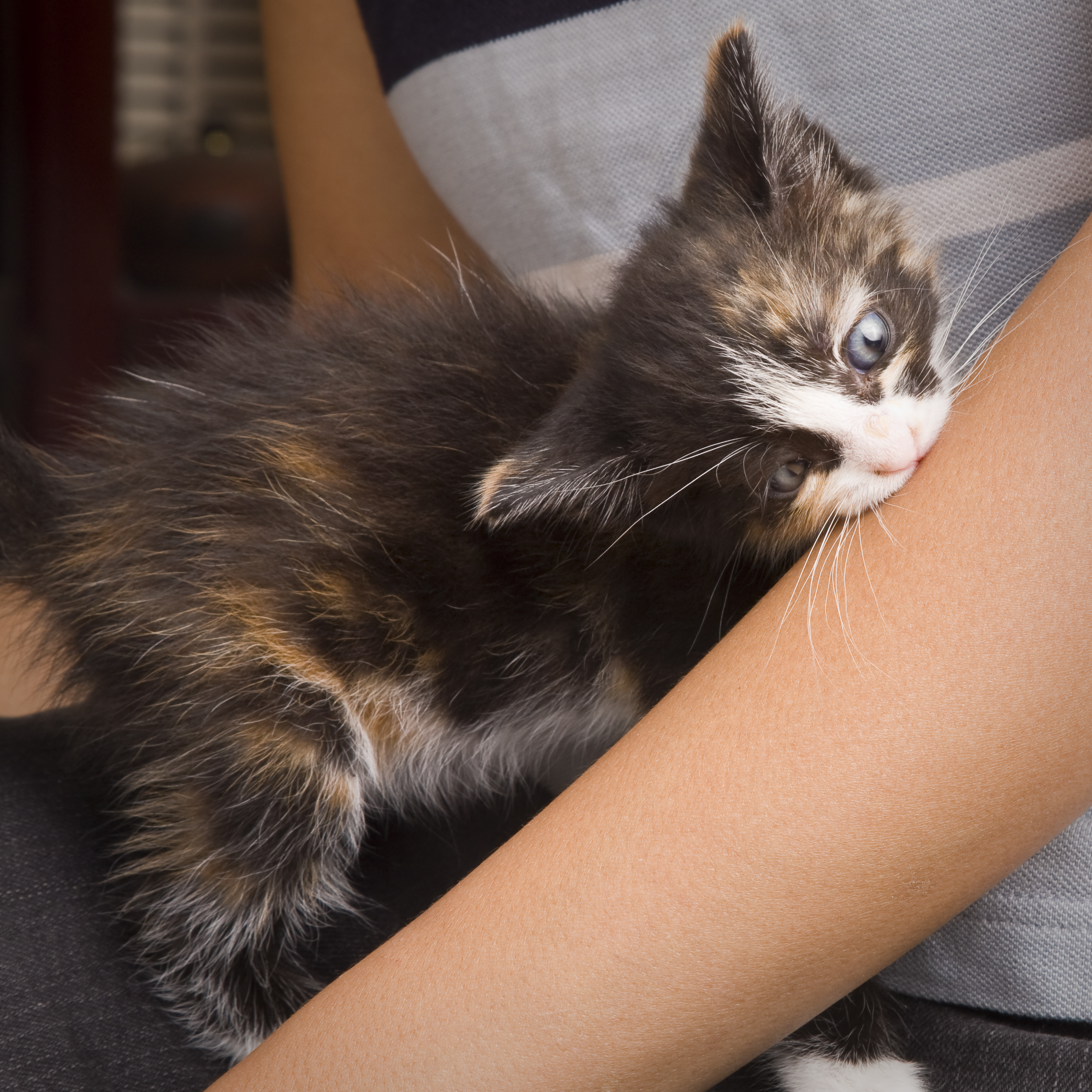Kind Kitties: Cat Bite Prevention Tips
 It’s a common scenario: One minute your sweet kitty is snuggled in your lap, purring away as you absentmindedly stroke his or her soft fur, and the next thing you know your little buddy has turned on you and is now ferociously biting the hand that was petting it so gently just seconds before. You shout, leap to your feet, knock over your beverage. Kitty darts off your lap and out of the room, leaving both of you shaken and annoyed.
It’s a common scenario: One minute your sweet kitty is snuggled in your lap, purring away as you absentmindedly stroke his or her soft fur, and the next thing you know your little buddy has turned on you and is now ferociously biting the hand that was petting it so gently just seconds before. You shout, leap to your feet, knock over your beverage. Kitty darts off your lap and out of the room, leaving both of you shaken and annoyed.
This strange behavior is certainly perplexing, but by focusing on a variety of cat bite prevention techniques you may be able to mitigate your cat’s aggression, and create a calmer, more peaceful environment that both you and kitty can enjoy.
Create The Right Environment
Cats are creatures of habit that generally prefer structure and order to their days and nights. Many cats do not like strangers coming into the home, or to have their day-to-day routines disturbed greatly. Never try to pick up or pet a strange cat, and provide a skittish cat in your home with plenty of safe hiding spots for when guests come over or schedules are disturbed.
Some cats may bite out of boredom or the need to play. Provide your cat with plenty of opportunities for exercise and mental stimulation, such as:
- Cat tree, jungle gym, or scratching post
- High perches
- Safe and fun cat toys
- Interactive games such as feather chase or laser pointer
A Little Training Goes A Long Way
Letting a kitten swat at your wiggling fingers is adorable and mostly pain-free. But doing so is likely setting the stage for regular, painful attacks once your kitten becomes a full grown cat. Don’t encourage this type of play with your kitten, and if he or she does attack your hand, pull it away and say “NO”. Older cats that have developed this habit can be trained out of it with consistency; give us a call for tips.
Learn Kitty Body Language
Sometimes it seems as though a cat will randomly attack your hand during a petting session. The attack may seem out of the blue, but it’s more likely that your cat was attempting to communicate his or her displeasure and you missed the clues. Signs that your cat is reaching the end of its tolerance include:
- Stops purring
- Tail lashing or thumping
- Skin twitching
- Meowing or growling
- Flattened ears
- Looking back at your hand
By paying attention to your cat’s body language, you may be able to discover where he or she enjoys being petted (back of the head, base of the tail, etc.), as well as for how long. By ending the petting session on a positive note, well in advance of when your cat normally becomes aggressive, you will be helping him or her to see petting and being handled in a positive light
Safety note: In the event your cat does bite you and the skin is punctured, thoroughly wash the area with soap and water and have it checked by a medical professional as soon as possible. Cat bites, especially those to the hand or foot, can be serious. Besides being painful, they can often lead to a bad infection that, in worse case scenarios, may require surgery to repair.
Other Cat Bite Prevention Tips
- If your cat is biting you at what appears to be inappropriate times, he or she may be in pain or not feeling well. Schedule an appointment for your cat with one of our veterinarians to rule out any underlying health problems that may be causing the aggression.
- If you have not yet had your cat spayed or neutered, consider doing so, as it can greatly reduce aggression and other undesirable behaviors.
- If biting or other aggressive behaviors persist, and there is no underlying medical condition causing it, consider seeking the help of a professional cat behaviorist.
Please don’t hesitate to call us with questions regarding the care of your cat – we’re here to help!



